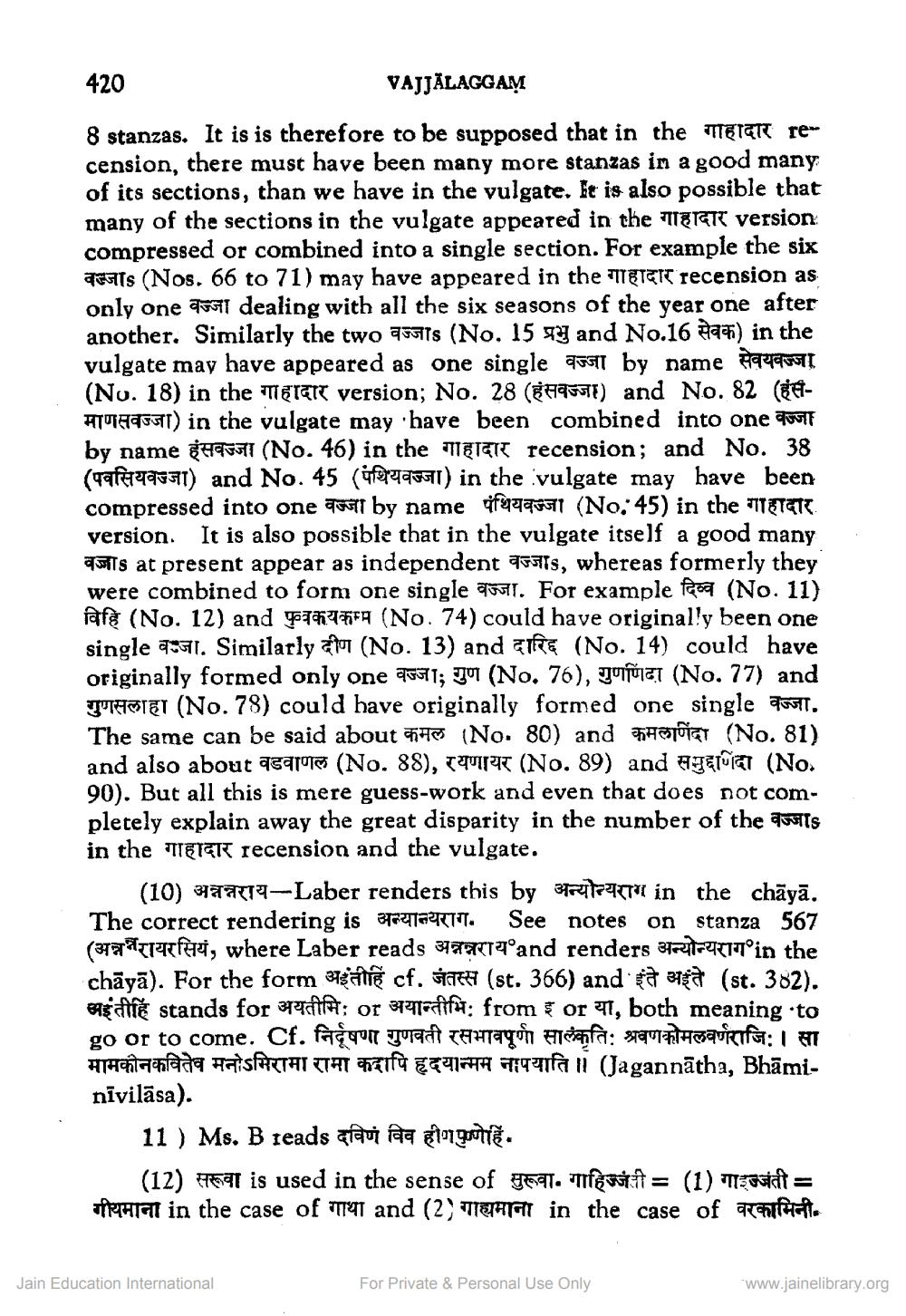________________
420
VAJJÄLAGGAM
8 stanzas. It is is therefore to be supposed that in the Ten recension, there must have been many more stanzas in a good many of its sections, than we have in the vulgate. It is also possible that many of the sections in the vulgate appeared in the R version compressed or combined into a single section. For example the six als (Nos. 66 to 71) may have appeared in the IT recension as only one dealing with all the six seasons of the year one after another. Similarly the two as (No. 15 and No.16 ) in the vulgate may have appeared as one single वज्जा by name सेवयवज्जा (No. 18) in the Tg version; No. 28 (8) and No. 82 (A) in the vulgate may have been combined into one f by name (No. 46) in the recension; and No. 38 (af) and No. 45 () in the vulgate may have been compressed into one वज्जा by name पंथियवज्जा (No. 45 ) in the गाहादार version. It is also possible that in the vulgate itself a good many Is at present appear as independent is, whereas formerly they were combined to form one single. For example (No. 11) afe (No. 12) and F (No. 74) could have originally been one single. Similarly (No. 13) and a (No. 14) could have originally formed only one 1; (No. 76), (No. 77) and THE (No. 78) could have originally formed one single . The same can be said about H (No. 80) and H (No. 81) and also about वडवाणल ( No. 88), रयणायर ( No. 89 ) and समुद्दाणिंदा (No. 90). But all this is mere guess-work and even that does not completely explain away the great disparity in the number of the s in the recension and the vulgate.
(10) अन्नन्नराय - Laber renders this by अन्योन्यराग in the chāyā. The correct rendering is अन्यान्यराग. See notes on stanza 567 (अन्नर्वैरायरसियं, where Laber reads अन्नन्नराय' and renders अन्योन्यराग in the chāyā). For the form a cf. (st. 366) and (st. 382). अहंतीहिं stands for अयतीमिः or अयान्तीभि: from इ or या, both meaning to go or to come. Cf. निदूषणा गुणवती रसभावपूर्णी सालंकृतिः श्रवण कोमलवर्णराजि: । सा मामकीन कवितेव मनोऽमिरामा रामा कदापि हृदयान्मम नापयाति ॥ ( Jagannātha, Bhāmi - nīvilāsa).
11 ) Ms. Breads दविणं विव हीणपुण्णेहिं.
(12) सरूवा is used in the sense of सुरूवा. गाहिज्जती = ( 1 ) गाइज्जती = माना in the case of गाथा and ( 2 ) गाद्यमाना in the case of वरकामिनी.
Jain Education International
For Private & Personal Use Only
www.jainelibrary.org




